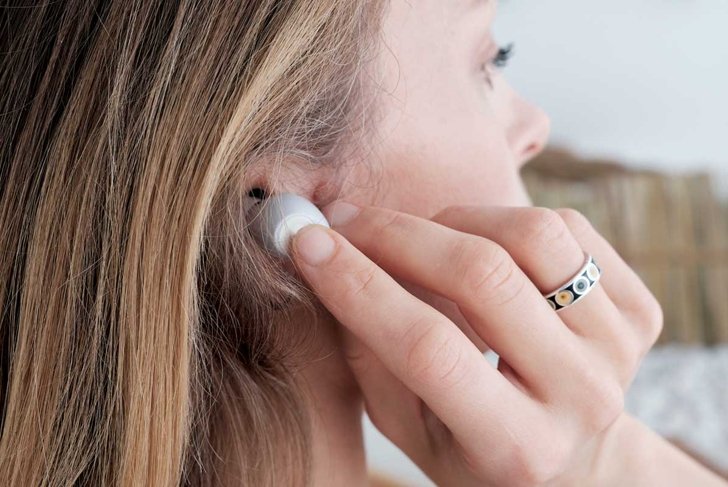Every December, millennials like myself eagerly anticipate their annual music preferences displayed by a popular streaming platform. We post our top five most-listened-to tracks on social media, believing that our taste in music reflects our personalities.
Imagine my surprise one year when my most-played "song" turned out to be a three-hour recording of white noise. Then came the difficult task of explaining to friends why I wouldn’t be sharing my playlist that year.
Even if you haven’t intentionally sought out white noise or its variations (much of what we refer to as white noise is actually pink noise, but we’ll delve into that shortly), you’re likely familiar with its sound. Noises like the hum of fans, the buzz of refrigerators, static from radios, gentle rain, and the roar of waterfalls are all examples of color noise, which represents sound distributed with a constant signal.
Listening to color noises can promote better sleep, increase concentration, and enhance learning—hence why I had it playing on repeat while working at my computer.
Explore the Spectrum of Sound
Different types of noise are categorized by their spectral density, which means how the power of the noise signal is spread across various frequencies. More plainly, it relates to where the energy of the noise is concentrated in the sound spectrum, which subtly alters how we perceive it.
Pink noise has a greater concentration of energy at the lower frequencies, making it feel like white noise but with a softer, deeper tone. That’s why much of what we consider white noise (including sounds from white noise machines) is actually pink noise—it’s more soothing to our senses.
Brown noise, also known as Brownian noise or red noise, produces a deeper sound reminiscent of rolling ocean waves.
Green noise resembles white noise but contains more natural sounds rather than static.
In addition, violet noise and grey noise exhibit variations of these characteristics. However, experts advise that sound categorization is not an exact science, so the distinctions between color noises can be ambiguous and their sounds may overlap.
White noise is a balanced blend of all frequencies detectable by the human ear. The term “white” for noise is akin to the color spectrum, as white light includes all colors of light at equal intensity.
The Possible Benefits of Color Noise
So, what occurs when we listen to color noise? While further research is necessary to grasp its full impact on our brains, one theory known as stochastic resonance suggests that white noise can enable us to filter out distracting external sounds and internal thoughts to concentrate on other stimuli more effectively.
In terms of sleep, the premise is relatively straightforward: a consistent background noise can make us less sensitive to unexpected sounds that might disrupt our rest at night.
A glance at TikTok, Spotify, or YouTube reveals that color noise has garnered its own dedicated audience. Many users share that color noise aids their focus, reduces stress and anxiety, and enhances sleep.
For neurodivergent individuals, including those with reading disabilities and ADHD, color noise can provide extra benefits by helping them concentrate and complete school tasks more effectively. Research has also indicated enhanced cognitive function in neurotypical individuals listening to white noise during word-learning tasks.
However, the scientific findings on color noise’s effects on sleep are somewhat mixed: one study indicated that playing pink noise overnight fostered deeper sleep and fewer disturbances, while another review found limited evidence that white noise enhances sleep quality.
From my personal experience, using a white noise machine before bed significantly improves my sleep quality, particularly by masking my dog’s (and occasionally my husband’s) snoring. Laurence Bonnemort, a child psychiatrist in France, also notes that color noise may benefit infants’ sleep.
The advantages of listening to color noise apply across different types; individual preferences can vary widely.
Listen Mindfully
Experts suggest that listening to color noise is entirely safe as long as, like any music, you keep the volume at a reasonable level. Prolonged exposure to sounds above 70 decibels can harm your hearing.
Begin Your Listening Journey
If the idea of color noise piques your interest, integrating it into your daily routine is straightforward. Consider utilizing a pink noise machine during sleep or playing brown noise while meditating in the morning or writing reports in the afternoon (especially helpful if colleagues are being loud nearby!).
Color noise can also be beneficial on the go: if the city sounds overwhelm you during your commute, pop on some color noise through your headphones to help you tune out and unwind.
Color Noise at Your Fingertips
Incorporating color noise into your daily life can be done easily with various apps and streaming services.
- myNoise: A free app for iOS and Android with customizable settings to create your preferred color noise.
- Headspace: Available via subscription on iOS and Android, it offers a large collection of meditative sounds and ambient music that can enhance relaxation and focus.
- Most music and podcast streaming platforms: They feature calming pink and brown noise tracks that range from a few minutes to up to 10 hours for sleep or working.
Beyond Sound: Supplements for Anxiety and Focus
In addition to listening to color noise, certain supplements may enhance sleep, alleviate anxiety, and boost cognitive function. It’s crucial to consult your healthcare provider about the best options for your needs.
For Better Sleep
- Amino acids, melatonin, and vitamin D might improve sleep quality.
For Reduced Anxiety and Depression
- Probiotics, vitamin B6, and vitamin D may help alleviate symptoms of anxiety and depression. More research is warranted to clarify their therapeutic effects, as well as the potential of other micronutrients like zinc.
For Enhanced Clarity and Focus
- Ginkgo biloba, ginseng, lion’s mane mushroom, omega-3s, lutein, and zeaxanthin (found in dark green vegetables, orange and yellow fruits, and egg yolks) could boost memory function and diminish brain inflammation.





